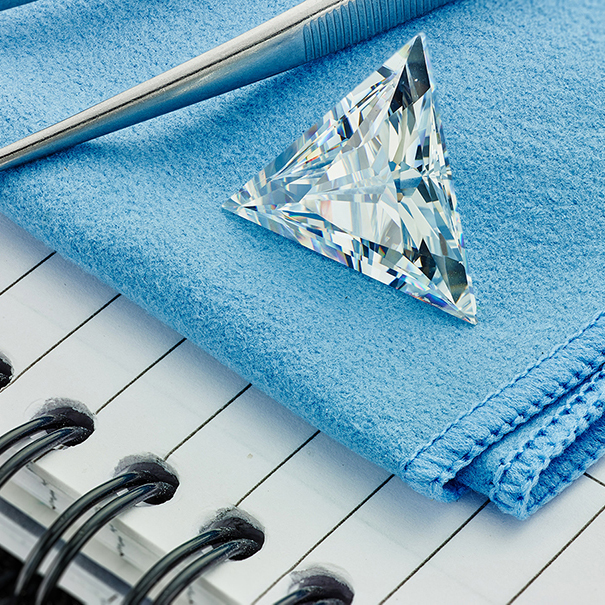What are Trillion Cut Diamonds?
The trillion-cut diamond is a triangular-shaped gemstone distinguished by its three equal sides and a facet count of either 31 or 50, determined by its purpose as a solitaire or an accent stone. Solitaire trillions exhibit a convex cut, featuring a curved profile, while accent stones showcase an uncurved or concave cut.
In the dynamic world of diamond cutting, the Trillion diamond cut emerged as a game-changer, challenging traditional attitudes toward patenting gem cuts. In the 1970s, two standout cuts, Leon Finker’s Trillion and Henry Grossbard’s Radiant, played pivotal roles.
Finker introduced the triangular brilliant design but initially refrained from patenting or registering the name. In contrast, Grossbard patented and trademarked his innovative mixed cut, gaining complete control over it. Finker’s delay in protecting the Trillion allowed its widespread adoption, with consumers and jewellers commonly referring to any triangular diamond as a “trillion.”
Despite eventually obtaining a patent, Finker couldn’t secure the trademark due to its similarity to “trilliant.” Grossbard’s success highlighted the importance of safeguarding cut designs, leading to a surge in cut patents post-1975. The Trillion’s journey reflects the shifting landscape of gem cut protection, with Grossbard’s Radiant setting a precedent for securing rights to valuable cuts in the industry.
Alternative names for triangular-shaped diamonds include Trillion-shaped diamonds. Also, Trilliant shaped diamonds.
Common misspellings include ‘Trillion cut’, and diamond reports usually refer to a Triangular modified-brilliant cut.
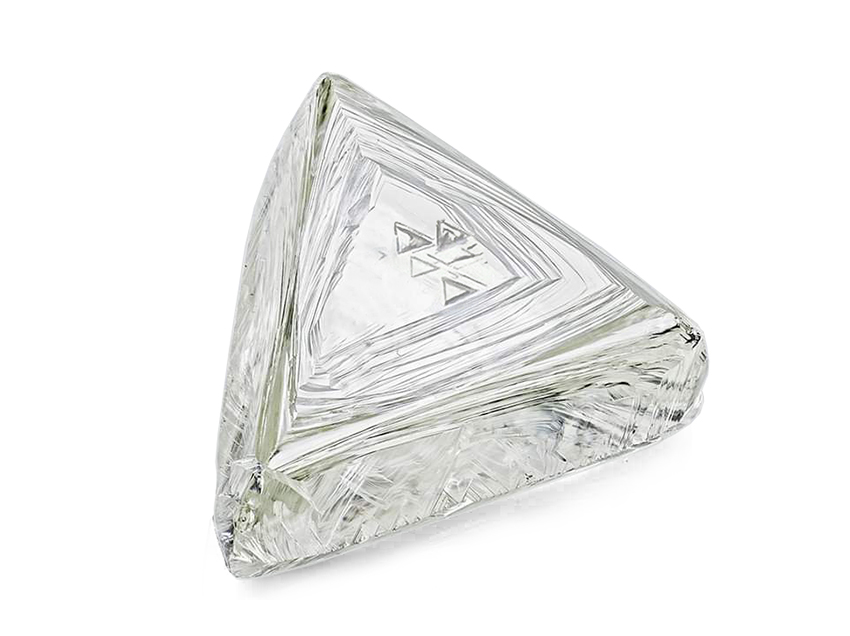
What is a Macle?
Macle describes the triangular shape of a rough diamond with a twin crystal form. Interestingly, diamond cutters use the natural triangle shape and added depth to create Trillion cut diamonds.
What is a Trilliant diamond?
‘Trilliant diamond’ combines the names ‘Triangle’ and ‘Brilliant’ to form a memorable name used by diamond dealers.
Triangle refers to the shape. At the same time, Brilliant refers to the angular faceting which gives the diamond its brightness.
On another note, most diamond Macles feature small inclusions and brilliant facets that reflect light and hide inclusions more effectively than diamond cuts such as the step cut diamond style. As a result, Trilliant cut diamonds often disguise small internal characteristics within the diamond.
The antique alternative to this diamond shape was the step-cut triangular baguette.
Antique step-cut variations date back to the 1920s. However, antique triangular shapes no longer appear commercially.
How many facets does a Trillion diamond have?
But what about the number of facets? Trilliant-cut diamonds typically have around 44 facets. However, some trillion-cut diamonds feature 50 facets, which add brilliance and fire to the diamond.
The sides of a Trilliant vary with a straight or curved shape, which affects the aesthetics of the diamond. In fact, most buyers express a personal preference for the model of their diamond.
For example, I prefer a shallow (big spread) Trilliant diamond with equal sides.
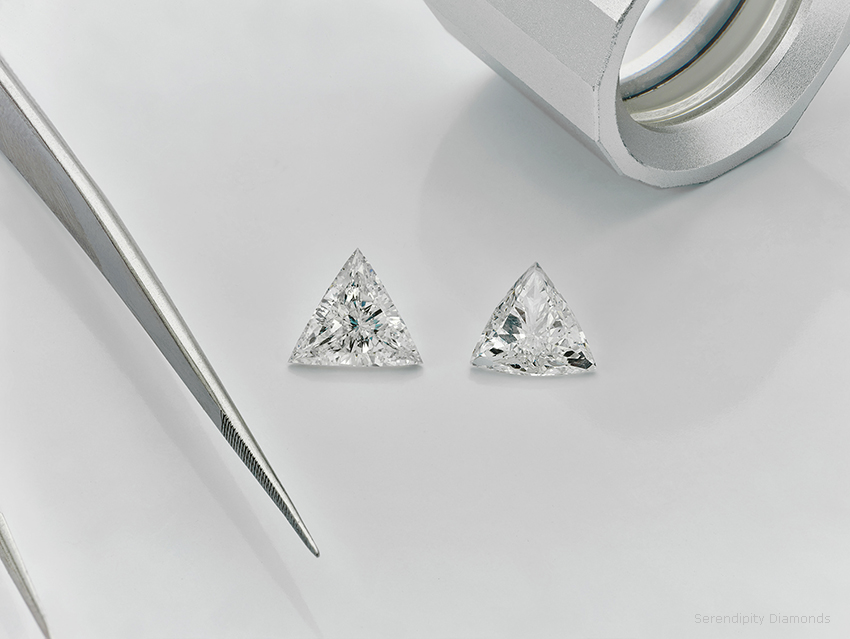
This photograph shows a straight-sided Trilliant-cut diamond and a curved-sided Trilliant-cut diamond.
Ideal Cut Trilliant diamonds
The ideal cut of a Trilliant ensures one-third of the diamond’s weight is above the girdle. In addition, two-thirds of the weight should be below the girdle.
Many Trilliant-cut diamonds feature thicker girdles with 50% of the weight below the girdle and 50% above. The resulting proportions result in reduced brilliance.
Carat weight and sizes
Unlike standardised diamond cuts such as the round brilliant cut, Trilliants vary enormously in depth and spread. For this reason, we assess each diamond on its appearance, carat weight, and physical size. Visually striking examples often have smaller carat weights than thicker diamonds. For this reason, never purchase a loose diamond without seeing a photograph of the stone.
Trilliant cut diamonds for three-stone engagement rings.
Trilliant-cut diamonds are sometimes used as side stones in a diamond ring—often cut into matching pairs. Their faceting suits placement on either side of another brilliant cut.
The design below shows a Princess cut and a Trilliant cut three-stone engagement ring. The ‘Tess’ design mixes both shapes beautifully with a perfectly balanced three-stone Trellis setting.
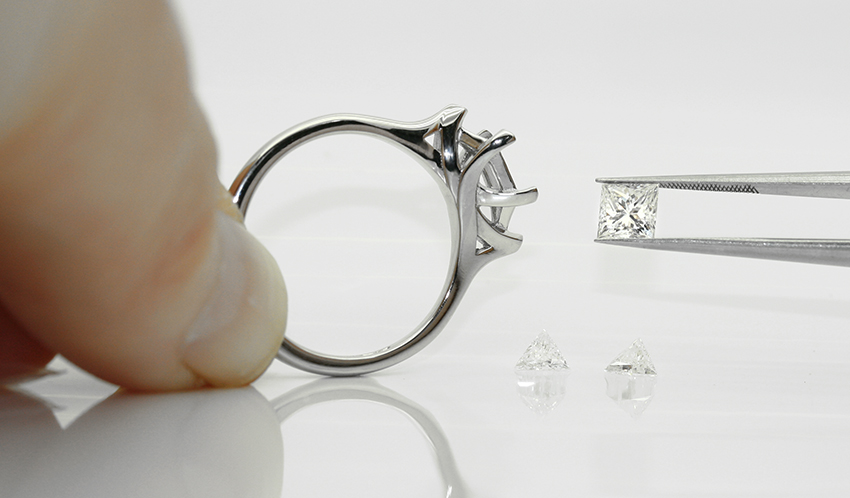
Selecting a Trilliant cut loose diamond for this unusual Trilliant engagement ring, beautiful in Platinum, white gold or yellow gold. Both Trilliants match to the Princess cut centre stone.
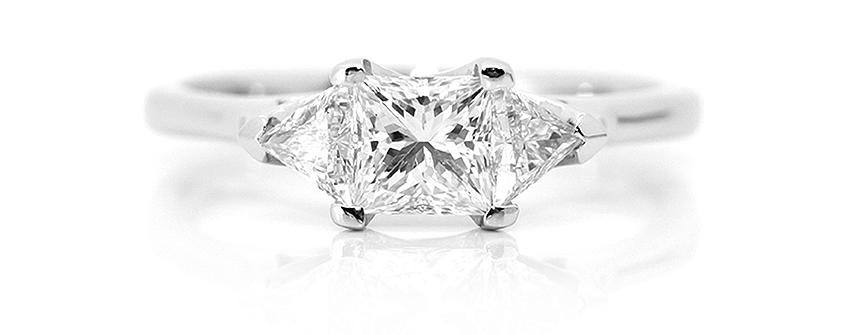
Pictured – the Tess engagement ring with a Princess cut centre diamond and Trilliant cut diamonds used as accent stones.
Alternative diamond settings
We create most stone settings by bespoke design owing to the variation in sizes, differences in length-to-width ratio, and availability. In fact, we create most diamond settings to the exact diamond by CAD design. The simplest version of a solitaire ring design features three claws to protect each point of the diamond.
How to source Trillion cut diamonds
If you’re interested in buying a Trillion cut diamond, please feel welcome to get in touch.
Our dedicated diamond concierge service sources your perfect diamonds, or select your design from our extensive products available to view through our shop.
Live chat and email support are available most days for help and guidance.
Trillion-cut diamond necklaces
Trilliant diamonds lend themselves very well to other jewellery styles. For example, earrings, necklaces, and earrings require a matched pair of Trilliants. In contrast, a solitaire Trillion cut diamond necklace requires a single Trillion cut diamond.
Following any Trilliant jewellery order, we start most commissions by sourcing the diamond. Next, we create a CAD design for the jewellery, working to exact stone measurements.
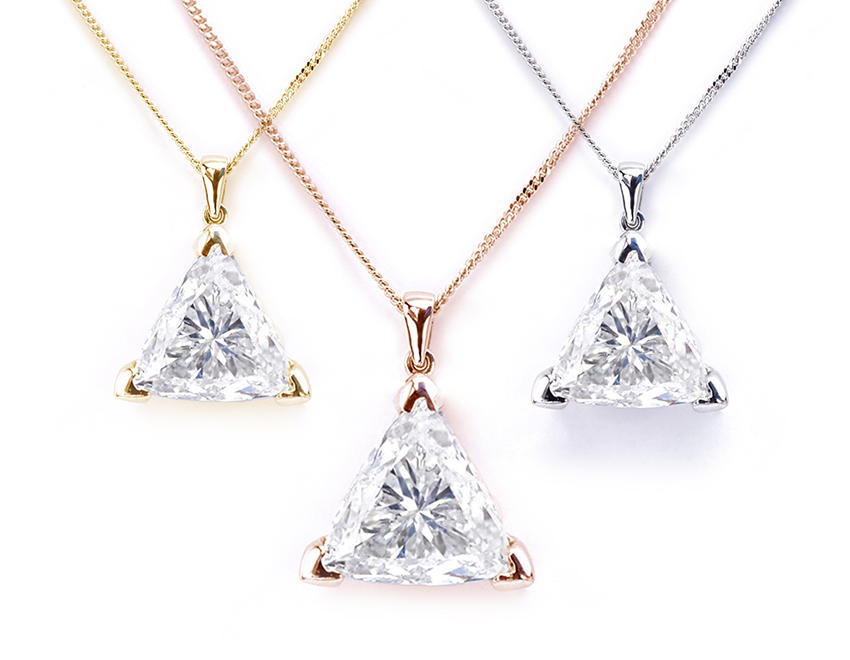
The Louvre diamond necklace shows a great example of a single-diamond set into a three-claw necklace design, available in most precious metal choices.
About Mark Johnson
My name is Mark and I'm founder at Serendipity Diamonds. I have 30 years or experience in polished diamonds and jewellery. Today, I work with an expert team in our Isle of Wight jewellery showroom located in Ryde. Most of my work involves helping clients in our showroom, working on our two websites and photographing jewellery commissions.



